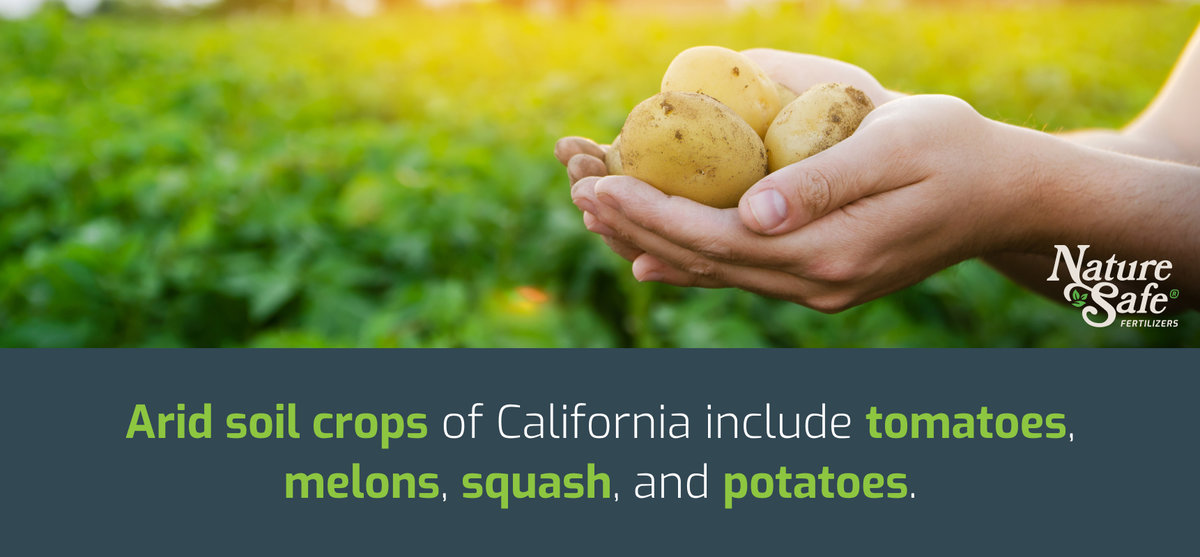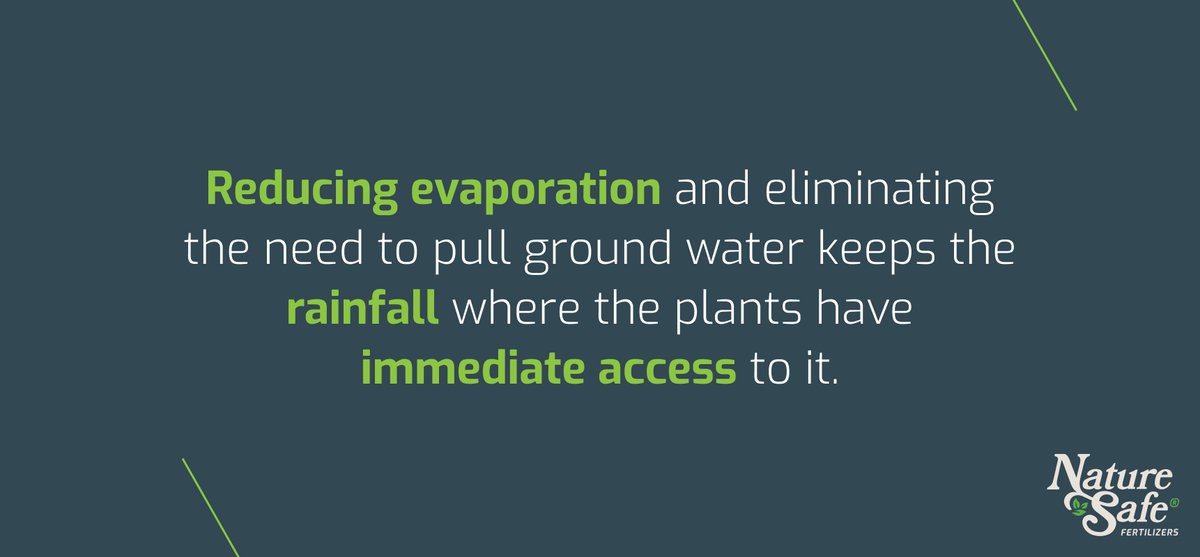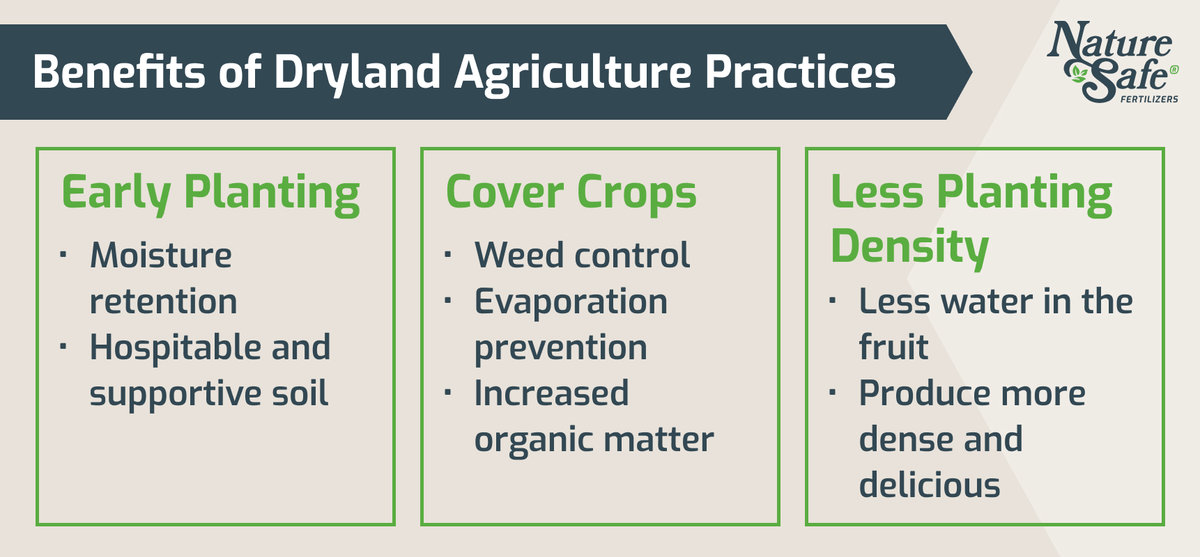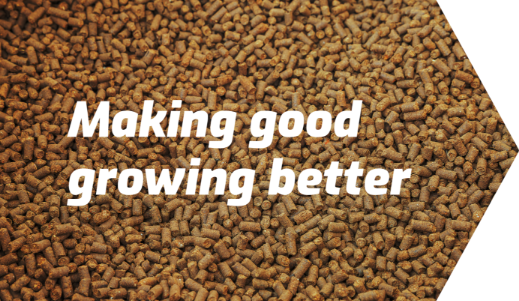
Dryland Farming: What It Is and Why It’s Important
- Posted: Oct 06, 2022
- Author: Nature Safe Fertilizers
- Crop
The most essential needs for crop growth consist of nutrition, water and sun. Nutrition can be supplemented with the right organic fertilizer, but getting plants the right amount of the other two elements can be a little trickier.
Water and sun quantities are driven by climate, but farmers and agronomists have been working on how to get around—and work with—those pesky forces of nature for a long time.
As for the amount of water that crops receive, farmers have been using irrigation systems for thousands of years. Crops don’t have to be planted in particularly wet regions, as long as there is a stable water supply.
But what about those places without a consistent, reliable source of water? Most arid climates, for instance, have a stark contrast between their rainy season and dry season.
This is where dryland farming comes in.
What Is Dryland Farming?
The name “dryland farming” might suggest that this means farming without water, but this is not exactly the case. Dryland farming, also known as “dry farming” or “dryland agriculture,” means that farmers do not use irrigation to supply crops with water. Instead, this practice relies upon soil moisture, ground water, and the occasional rainfall.
Dry farming is not generally meant to afford farmers the same high yields that occur during the normal growing season. However, it does help employ sustainable and regenerative agriculture practices, like keeping the soil rooted year round.
Continuingly keeping roots in the soil not only keeps the soil biome healthy and robust, but it also helps the soil structure retain more moisture. This will support a field that is able to produce some crops in the dry season, but, more importantly, it sets up the soil to be in better shape for the regular growing season.

How is Dryland Farming Different from Rainfed Farming?
Rainfed farming is related to dryland farming, but they aren’t the same thing. Both rely on natural moisture rather than irrigation. Rainfed farming, however, happens during the rainy season, while dryland farming happens during the dry season, or in arid climates.
How Much Moisture Does Dry Farming Provide?
Both of these passive methods of watering crops can be used in many climates. However, not every farm qualifies as a dryland agriculture setting.
Some say that dry farming can only happen in regions with more than 20 inches of rainfall each year. In such areas, nearly all of this rain will happen in one part of the year, followed by several long months of little-to-no precipitation.
One of the things that dry farming aims to prevent is water evaporation out of the soil. This is why farms in places that have higher evaporation rates than precipitation rates are more likely to be classified as a “dryland farm”.
Dry farming comes down to crops drawing moisture from the soil. The practice is mutually beneficial in allowing the crops to last and the soil to maintain its integrity during the dry season.
Who Can Benefit from Dryland Agricultural Practices?
This method of farming has been used for centuries in climates all across the world. Dryland agriculture is most beneficial for farmers that are facing unreliable water sources. Much of the world is facing drought, but it is possible to utilize the water we have before it evaporates.
California and Western United States Dry Farming Benefits
The southern United States is made up of a few deserts, and much of the western part of the country is arid or semi-arid. Yet, a significant amount of farming is done in these regions—especially in California.
In fact, many California vineyards are already practicing dry farming. Other popular arid soil crops in California include tomatoes, melons, squash, and potatoes.
Whether through mountain snowmelt or a monsoon season, the West and Southwest historically get a fair amount of moisture for part of the year. But the drought that is taking over much of the US is no secret. Dryland farming may be the way through it.
Cues from the West from Mediterranean Dry Farming
We mentioned Californian wine grapes, but Mediterranean wine grapes are also historically dry farmed. Much of the Mediterranean has very similar climates to southern California.
Mediterranean farmers have been farming without irrigation for a very long time, and are well-versed in the timing of planting and harvesting in the dry seasons. Grapes do especially well, but so do olives and grains.

Dryland Agriculture in the Midwest and Great Plains
Midwest farming typically calls to mind images of lush green fields of soybeans and sweet corn, but farms in this region can benefit just as much from dry farming.
Farmers in the Midwest and Great Plains states, like Kansas, have been combining rotational grazing grounds for livestock and dry farming to achieve healthy crop sustainability.
Other places on the plains have learned that crops like wheat generally need less water than others, so they plant differently according to the season.
Pillars of Dryland Agriculture
Everything about dryland agriculture is focused on keeping the soil healthy so that even dry crops can thrive. Dry farming practices can be boiled down to three major objectives:
Reduce Evaporation
One common way to reduce evaporation is with dust mulch. This is the hard, dry surface that protects the lower layers of soil. It is, essentially, a seal that is formed when top soil layers are compacted down. Even if the first few inches of the soil are totally dry, the moisture deep below the surface will stay there.
Retain Rainfall
Some moisture in the soil is vital in reducing runoff that can’t be immediately used by crops. Reducing evaporation and eliminating the need to pull ground water keeps the rainfall where the plants have immediate access to it.
When the wet season rolls around again, the moist soil will help prevent flooding and runoff.

Grow Drought-Tolerant Crops
Crops that are planted on dryland farms will have to work for their water. They have to be able to grow deeper roots, and take up water in small amounts. Not every crop is going to be successful in this environment.
Drought-resistant crops, like wheat and barley, thrive in arid climates. They will do the best in dry farming.
Dryland Agriculture Practices
Dryland agriculture requires some strategy when it comes to deciding what to sow and when:
Early Planting
Planting before the soil gets too dry has several benefits. Mainly, you get a head start on moisture retention. Keeping roots in the soil does nothing but good things for it, and you don’t want to wait until the ground becomes too inhospitable to support your crop.
Cover Crops
Cover cropping is one of the most beneficial methods for regenerative agriculture. Leaving crops in the field to cover the ground once they die gives the soil in a dry farm a huge boost. A few reasons to let the cover crops turn to mulch include:
- Weed control
- Evaporation prevention
- Increased organic matter
When used as natural mulch, all of the benefits cover crops present when they are green and in-season translate into the soil in the dry season. Using cover crops this way means less competition for water, more moisture in the soil, and more organic matter. All of these benefits can lead to healthy soil, even in arid climates. Cover crops can also be tilled to create “green manure,” which adds nutrients to the soil.
Less Planting Density
Speaking of less competition for water, it’s important in dry farming to sow crops less densely than normal. After all, the water they will reach is limited. Dry farming won’t yield the same amount of crops as the height of the growing season, but that’s not the purpose of it.
To keep the soil healthy, farmers must plant less than normal. Having said that, less water in the fruit means that their produce will be even more dense and delicious!

Dryland Agriculture and Fertilizer
One disadvantage of dryland agriculture is that crops aren’t always set up for success. The lack of water makes it difficult for nutrients to move around the soil. No live cover crops means fewer nutrients and organic matter.
Fertilizers can provide significant benefits to this method of agriculture. The best time to add fertilizer is when crops are planted early, and before the soil is cultivated down to create dust mulch. This way, the minerals and nutrients can disperse throughout the soil.
Nitrogen-rich fertilizers are important at this stage as well, since nitrogen is essential in creating the physical structure of the plant and its roots.
Dry Farming for Sustainable Growth and Better Product
Agriculture is not an easy enterprise, especially as water is becoming more and more scarce and the climate continues to change. Sustainable farming practices like dry farming are a way to work with what we have and turn the ecological tide.
Nature Safe Fertilizers is dedicated to sustainable agriculture and creating safe and effective ways to keep food on the table. Call us today, and we’ll help you discover which of our organic fertilizer products can help you make good growing better.
